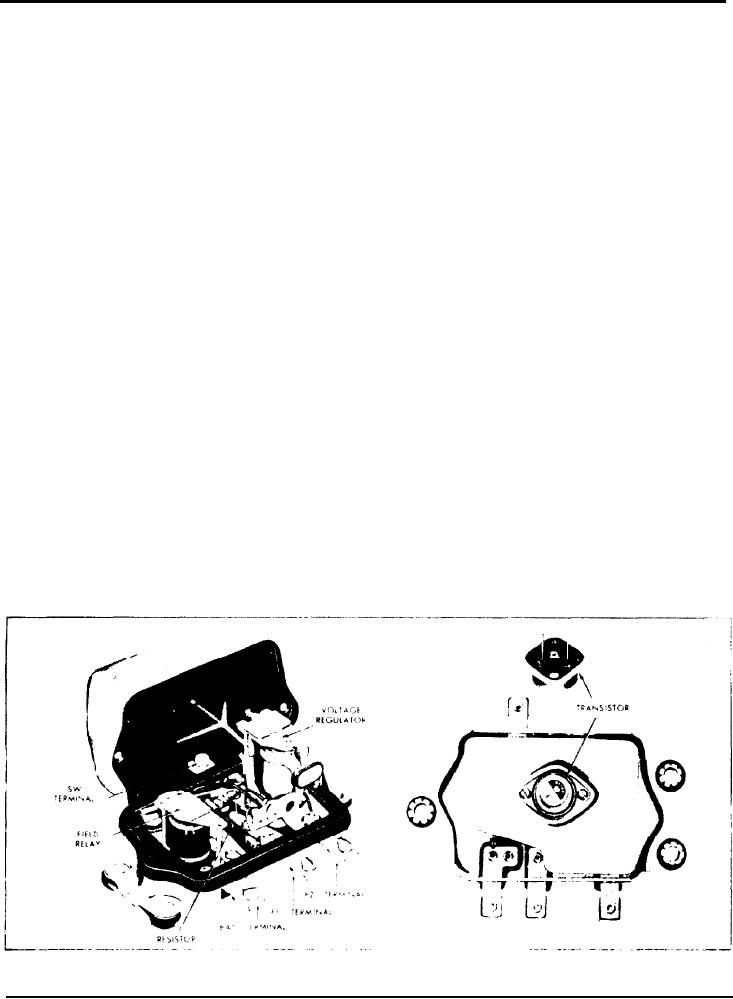
DETROIT DIESEL 53
7.1.1 Battery-Charging Generator Regulator
CONTROL RELAY
Operation
When the ignition switch is "OFF", the contact points
are held apart by the tension of a spiral spring acting
on the armature. When the ignition switch is turned
In addition to a circuit breaker and a voltage
regulator, the three-unit reguIator has control relay
"ON", battery current flows through the control relay
unit. This unit has a core with a single shunt winding
winding to ground. The magnetic field produced by
connected from the "SW" terminal of the regulator to
the winding overcomes the armature spring tension
ground. The winding and core are assembled into a
and pulls the armature down causing the contact
frame. A flat steel armature supporting the upper one
points to close. This completes the circuit to ground for
the circuit breaker relay winding so that it can operate
of two relay contacts is attached to the frame by a
when the D.C. voltage from the power rectifier reaches
hinge and is centered above the core. The lower
contact point is supported by a detachable contact
the value for which the circuit breaker relay is
support insulated from the frame. An armature stop is
adjusted. The control relay contact points remain
assembled above the upper contact.
closed until the ignition switch is turned "OFF".
TRANSISTORIZED AND TRANSISTOR REGULATORS
In addition to the standard regulator, there are two
a vibrating voltage regulator unit and a field relay
unit. The other is a transistor regulator which contains
other types of regulators being used with the self-
no moving parts and is used with a separately
rectifying A.C. generators in the battery-charging
mounted field relay.
circuit. One is transistorized regulator which contains
TRANSISTORIZED REGULATOR
The transistorized regulator (Fig. 3). for use on a
windings when the contacts separate. A suppression
negative ground circuit, contains a vibrating voltage
diode prevents damage from transient voltages which
regulator unit unit and field relay unit. The regulator uses
may appear in the system.
a single transistor and two diodes. The transistor works
Certain transistorized regulators are equipped with a
in conjunction with the conventional voltage unit
choke coil to `permit the installation of a capacitor
having a vibrating contact point to limit the generator
between the regulator and the "BAT" terminal on
voltage to a pre-set valve. A held discharge diode
installations experiencing radio interference. The
reduces arcing at the voltage regulator contacts by
capacitor suppresses the radio noise and the choke coil
dissipating the energy created in the generator field
Fig. 3 Transistoried Regulator
Page 4

